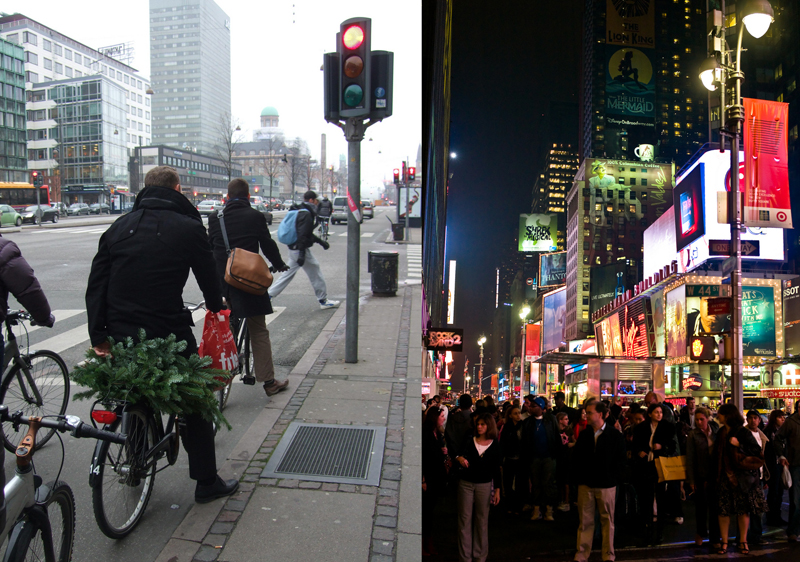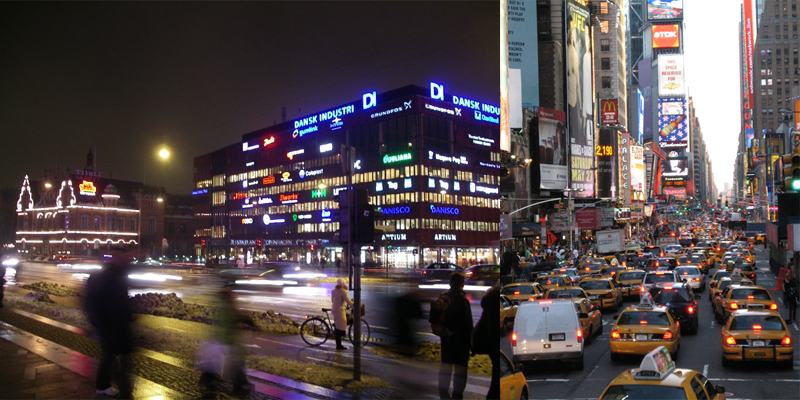A Country of Cities
A series of opinion pieces in which Vishaan Chakrabarti casts key current events as rallying cries in his evolving argument for urban density, for a Country of Cities.
We are celebrating 15 years — and counting — of stories that are deeply researched and deeply felt, that build a historical record of what the city has been.
This essay is the second in a series of opinion pieces by Vishaan Chakrabarti, an architect and planner who believes passionately that dense urban environments are engines of sustainability, justice and economic opportunity that we can no longer afford to ignore as we establish priorities for policy and governance. Urban Omnibus heartily agrees, but the reason we air these opinions is not to lobby for a particular policy agenda but rather to provoke debate. What do you think? Where should a specifically urban set of policy strategies fit within our approaches to climate change, public health and unemployment? Whatever your opinion, we want to hear from you. Leave your response in the comments field below or email an op-ed to us here. –C.S.
Some years ago I was invited to lecture to a group of architects and urbanists in Denmark. The hospitality was outstanding, the setting modern yet warm, and the economy secure due to substantial offshore oil and gas reserves that allow the small, homogenous nation to be happily socialist. The majority of the country is middle class. My host explained to me that the big cultural taboo in Danish society was ambition – he admired people he knew who wanted to excel, and had therefore left for the UK or US, to seek something beyond the mean.
I thought myself lucky to have experienced this charming but – no offense – remote place, and relegated my admiration to a renewed love of egg chairs, sidewalk pavers, and wooden toys.
Who knew that years later Copenhagen would become the arbiter of our own success?
In New York last year, Copenhagen somehow became the paragon of urban design, the place against which our polyglot metropolis should be measured. It was the talk of the urban design town: The Danes are great! People use bikes! There are beautiful waterfronts! There are lots of clean blonde people! Who wouldn’t want New York to look like Copenhagen? The fact that the two cities have virtually nothing in common in terms of population, economy, morphology, history, or ambition – yes that dirty word, ambition – seemed not to matter.
All of Denmark has roughly five million people, ninety percent of whom are of Danish descent. New York City has roughly eight million people, all of whom are, in some sense or another, striving immigrants. What were New York’s urbanists thinking?
Then there was the President’s ill-advised trip to Copenhagen a few months ago to lobby for the Chicago 2016 Olympic bid. It was well known beforehand that the IOC had issues with the USOC, and that the Rio bid, with the first games to be held in South America, held all the allure. The vote wasn’t even close. What was Rahm thinking?
And now there is the tepid announcement that rather than assert true leadership at the United Nations Climate Change Conference in Copenhagen, the White House, along with China and India, will set arbitrary targets that put no real pressure on we-the-people to change our profligate consumption. What was the President thinking?
He was thinking about health care. And who can blame him? Like Copenhagen, who doesn’t love health care?
After all, this is the Administration’s Social Security moment. It is their Medicare moment. But one cringes to think that it is not their Kennedy moment, it is not their Eisenhower moment – it is their Lyndon B. Johnson moment.
With 30,000 troops deploying against a true existential threat, crushing double-digit unemployment, a national debt running amok, and a global climate crisis running unabated, what is our primary focus? A new, unaffordable entitlement, an entitlement that once passed will join Social Security and Medicare as a third “third rail” in American politics. Just as wealthy elderly citizens refuse to pay taxes on social security benefits, just as no one wants to hear about extending the retirement age, just as people want an MRI for a hangnail – just as none of us want to hear that when it comes to health care, we are the problem we seek – we are about to adopt a mammoth new program that once passed, will be beyond our capacity to make rational.
Which is not to say that nearly 50 million uninsured Americans is acceptable, to the contrary, it is a national sin. But the question is whether we will insure those Americans on the backs of our children, or whether we will actually take action to lower costs in order to spread coverage.
One could imagine a very different first year for the Obama Administration. After the $700 billion TARP bailout, in which banks were said to be too big to fail, we could have been told that the nation and world were, in fact, too big to fail. Once Citibank was pulled from the precipice, they could have said “OK folks, you’re next.”
Imagine that it is early in 2009. In that gray light of late winter, four terrifying, push-me-pull-you facts are clear to our leaders:
At that point imagine the road not taken. Imagine the Administration avoided the naiveté that said “America, if we pass health care reform, we’ll lower costs and fix the deficit” – a premise that never contemplated republican cries of death panels for granny and democratic cries about any measure that reduced benefits for anyone – a premise that from its inception failed the sniff test of cost control.
Perhaps we might hear our leaders promote time- tested ideas of density and mass transportation, of cities using far less energy per capita.
Imagine they instead said “America, we have a silver bullet. We are going to rebuild this country. We are going to build a new national landscape, and in the process we are going to create jobs, build an innovation economy, rein in health care costs, lower our dependence on foreign oil, and lead the planet to sustainability. We are going to do this with one fell swoop, with one big idea, called the American Smart Infrastructure Act. (ASIA).”
Imagine that in early 2009, they decided to accelerate and combine the Federal Transportation bill (currently decelerated because of health care), and Cap and Trade legislation into one consolidated bill, ASIA, which took as its premise the following:
I know what you’re thinking: A new national gas tax? Eliminating mortgage deductions? The US government promoting urbanity?
Chakrabarti’s cheese has slipped off his cracker.
But consider the enormous political capital Obama has expended on health care – political capital that he could have instead expended on this silver bullet. Consider further that issues of energy independence, infrastructure, and climate change poll strongly among both independents and Obama’s base. Consider that as gas prices spiked two summers ago, mass transit use rose substantially nationwide. Consider that many municipalities have passed local tax increases to create transit infrastructure, and that California passed a state bond issue to support high speed rail. And consider that in the wake of the passing of such an infrastructure bill, the restoration of America’s economy could be so profound that by Obama’s second term, meaningful health care reform could be passed with a far more supportive public at his back.
Today Americans may be divided, but they share the knowledge that something is deeply wrong. Two thirds of the housing in Phoenix is in foreclosure, in contrast to one fifth of the housing nationwide. Unemployment rates in exurban California and Las Vegas are several points higher than denser areas, with the exception of aging industrial cities like Detroit, because most exurbs have no industry other than real estate itself. Among the leading killers in America are cardiovascular disease and adult onset diabetes, which used to rank much further down. Our young men and women are dying in the mountains of Afghanistan, struggling against an enemy funded by an Arabian peninsula we have enriched because of a profligate lifestyle we have endorsed. And to paraphrase Al Gore recently on SNL, “There are guys in flip flops outside the Christmas tree at Rockefeller Center.”
This is why it is this bill, this silver bullet, that demands the fierce urgency of now.
And so, to the state of Denmark, we can imagine our young and noble President traveling not as Hamlet, wrestling the dagger of the trillion dollar health care bill he sees before him, but as Henry V at Agincourt, proclaiming “from this day to the ending of the world, but we in it shall be remember’d…”
Perhaps we can imagine the President being remembered in Copenhagen for something other than vague emissions targets and a sense that fluorescent light bulbs will save us from this morass. Perhaps we can imagine that beyond all the fancy talk of pollution sequestration and carbon offsets, we might hear our leaders worldwide promote time-tested ideas of density and mass transportation, of cities using far less energy per capita before a dollar is even spent on green technology.
Perhaps we can imagine the next UN climate change forum not taking place in quaint Copenhagen, but in exploding Shanghai or emerging Mumbai, where a real discussion could ensue about the terrifying, impending embrace by China and India’s two billion people of America’s most lethal export: the suburb.
And perhaps we can imagine ASIA in the US – perhaps we can imagine a new policy that generates a new landscape for a new millennium – one in which anonymous sprawl gives way to a green, healthy, prosperous urbanity.
Perhaps we can imagine a Country of Cities.
The views expressed here are those of the authors only and do not reflect the position of The Architectural League of New York.
A series of opinion pieces in which Vishaan Chakrabarti casts key current events as rallying cries in his evolving argument for urban density, for a Country of Cities.




Comments